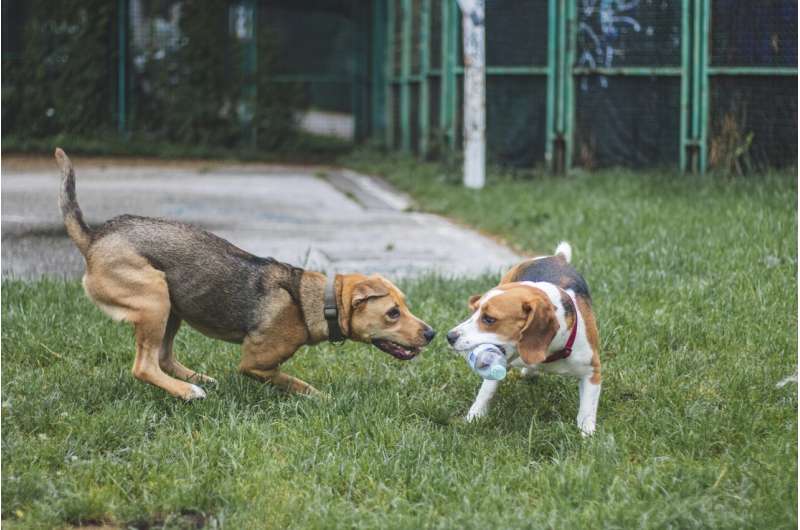Credit: Unsplash/CC0 Public Domain
What's the best way to analyze dog behavior? Take a bow(wow), crowd-sourcing.
A team of animal behavior psychologists at the University of Sussex have shown that asking the general public to analyze the behavior of dogs in videos can lead to highly accurate results, as published in the Animal Cognition journal.
The researchers found that asking the public to watch videos of animals responding to stimuli—such as sounds—reduces bias in the results, and increases both the reliability of the analysis and also the level of nuance captured.
The team's previously published findings in relation to the dogs featured in these videos includes that dogs are able to recognize words, no matter who is speaking. According to the research published in 2019, dogs are able to listen to different people saying the same word and recognize it as the same word, ignoring the differences between speakers. Dogs can also discriminate between unfamiliar people by the sound of their voice alone.
The wider Sussex team have been looking into various aspects of animal behavior such as what words, sounds or music dogs recognize; whether horses recognize people's facial expressions; and how cats respond to human interaction.
In doing this work, they uncovered a major challenge; that it's possible that the individual biases of the researchers can affect how animal behavior is interpreted. To avoid this, in the past, researchers have coded lots of variables to try to capture an animal's reaction to a stimulus.
The sort of things the researchers would code would include how quickly and for how long a dog responded to a sound, which direction the animal moved in, and number of body movements the animal makes. These behaviors are easy to code, but don't capture nuance. Prof David Reby at the University of Sussex had the idea to reduce subjectivity by sourcing analysis from a large number of people who weren't involved in the study, and achieving nuanced results by asking them to score reactions out of 100.
Dr. Holly Root-Gutteridge, visiting researcher at the University of Sussex, who led the research said:
"In this study, we explored whether we could crowd-source the analysis—using test videos of dogs reacting to sound stimuli.
"We asked over 300 people to watch the videos and tell us how the dogs reacted to a sound stimulus in each. We found that people were willing to take part and were actually pretty good at agreeing with each other about reaction strength. Most encouragingly, we found that crowd-sourced analysis captured nuances missed by the more classic and cruder metrics."
Prof David Reby from the School of Psychology at the University of Sussex, and a co-author on the paper, said:
"We hope that this 'crowd-sourced rating' method will be adopted by other animal researchers to better capture and describe animal behavioral reactions, improving our understanding of animal behavior by providing us with another tool."
The paper, "Using a new video rating tool to crowd-source analysis of behavioral reaction to stimuli," is published in the journal Animal Cognition.
More information: Holly Root-Gutteridge et al. Using a new video rating tool to crowd-source analysis of behavioral reaction to stimuli, Animal Cognition (2021). DOI: 10.1007/s10071-021-01490-8
Holly Root-Gutteridge et al. Dogs perceive and spontaneously normalize formant-related speaker and vowel differences in human speech sounds, Biology Letters (2019). DOI: 10.1098/rsbl.2019.0555
Journal information: Animal Cognition , Biology Letters
Provided by University of Sussex























